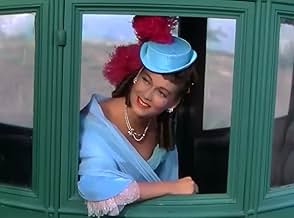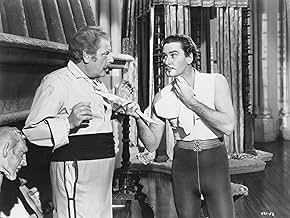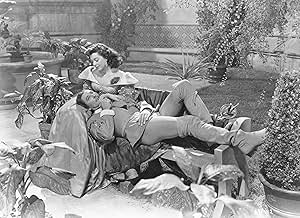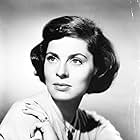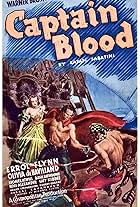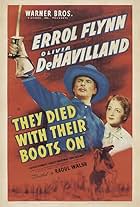IMDb RATING
7.0/10
3.7K
YOUR RATING
The great lover Don Juan comes to the assistance of his queen.The great lover Don Juan comes to the assistance of his queen.The great lover Don Juan comes to the assistance of his queen.
- Won 1 Oscar
- 2 wins & 2 nominations total
Jean Shepherd
- Donna Carlotta
- (as Jeanne Shepherd)
Abdullah Abbas
- Townsman
- (uncredited)
Rama Bai
- Girl at Inn
- (uncredited)
Storyline
Did you know
- TriviaThe dramatic leap which Don Juan did from the 17th step of the grand staircase during the climactic sword fight with Robert Douglas was done by stuntman/actor Jock Mahoney, the only stuntman who would agree to do it. Mahoney was paid $350 for the stunt.
- GoofsThere are several references to the city of St. Petersburg, Russia, in this film set during the reign of Queen Elizabeth I. The said city was not founded until a century AFTER that queen's death in 1603.
- ConnectionsEdited from The Adventures of Robin Hood (1938)
Featured review
Amusing and entertaining swashbuckler has Don Juán (Errol Flynn in his self-mocking best) saving Queen Margarita (Viveca Lindfords) who secretly loves her champion from her evil First Minister , (the British Robert Douglas) . He , then swashbuckles his way across England and Spain in effort to win her heart . At the end Don Juan finds a worthy fencing adversary in the treacherous Duc of Lorca (actually , Duke of Lerma , favorite of King Felipe III) at an exciting final duel .
Errol's last spectacular and overwhelming epic features impressive duels , elegant costuming , impressive production design , marvelous gowns , and loads of action . It is so crammed with fights and action , there hardly seems to be a set-piece that doesn't start or end with a duel , fencing or brawl . This was the major ¨Sword and Swagger¨ film mounted by First National Pictures and Warner Brothers for its superstar of swashbucklers , Errol Flynn . Errol is still nearly at his most agile and deft style . Errol Flynn was 38 when he made this movie , but his wild lifestyle had diminished his health and made him less able to perform his own stunts, as he had in earlier films . Previously , Flynn made his best swashbucklers and played successes as ¨Captain Blood¨ , ¨Adventures of Robin Hood¨, ¨The prince and the pauper¨ , ¨Sea Hawk¨, ¨The private lives of Elizabeth and Essex¨ , ¨Gentleman Jim¨ . Flynn performed splendidly the mass battle royal at the ending and the ultimate romantic gesture for the queen , he certainly gave his enthusiasts something to remember him by . It was all downhill for Errol after this , as he followed his successive flops as ¨The warriors¨, ¨Against all flags¨, ¨The Master of Ballantree¨ and ¨Adventures captain Fabian . Support cast is pretty well , such as Alan Hale Jr as his squire , Rommy Brent playing the silly King Felipe III and Robert Douglas is too good for his baddie role . And other notorious secondaries in brief apparitions as Robert Warwick , Douglas Kennedy , Barbara Bates , Monte Blue , Raymond Burr , Helen Westcott , Fortunio Bonanova and forthright as well as sympathetic Una O'Connor , as usual .
Richly costumed , including luxurious gowns and in glamorous Technicolor by cameraman Elwood Bredell . Breathtaking and luxury set design and art design by Edward Carrere and Harry Platt , though mostly interiors . Thrilling and evocative musical score by the great maestro and prolific Max Steiner . The picture is not a masterpiece , but being made with huge confidence and fair play by Vincent Sherman . Vincent directed all kinds of genres : drama , suspense , Western , biography , such as ¨Cervantes¨, ¨Lone Star¨, ¨Affair in Trinidad¨, ¨The Young Philadelphians , ¨Ice palace¨, ¨All through the night¨ , ¨Underground¨. Being his best films : ¨Mr Skeffington¨and this ¨Adventures of Don Juan¨.
Errol's last spectacular and overwhelming epic features impressive duels , elegant costuming , impressive production design , marvelous gowns , and loads of action . It is so crammed with fights and action , there hardly seems to be a set-piece that doesn't start or end with a duel , fencing or brawl . This was the major ¨Sword and Swagger¨ film mounted by First National Pictures and Warner Brothers for its superstar of swashbucklers , Errol Flynn . Errol is still nearly at his most agile and deft style . Errol Flynn was 38 when he made this movie , but his wild lifestyle had diminished his health and made him less able to perform his own stunts, as he had in earlier films . Previously , Flynn made his best swashbucklers and played successes as ¨Captain Blood¨ , ¨Adventures of Robin Hood¨, ¨The prince and the pauper¨ , ¨Sea Hawk¨, ¨The private lives of Elizabeth and Essex¨ , ¨Gentleman Jim¨ . Flynn performed splendidly the mass battle royal at the ending and the ultimate romantic gesture for the queen , he certainly gave his enthusiasts something to remember him by . It was all downhill for Errol after this , as he followed his successive flops as ¨The warriors¨, ¨Against all flags¨, ¨The Master of Ballantree¨ and ¨Adventures captain Fabian . Support cast is pretty well , such as Alan Hale Jr as his squire , Rommy Brent playing the silly King Felipe III and Robert Douglas is too good for his baddie role . And other notorious secondaries in brief apparitions as Robert Warwick , Douglas Kennedy , Barbara Bates , Monte Blue , Raymond Burr , Helen Westcott , Fortunio Bonanova and forthright as well as sympathetic Una O'Connor , as usual .
Richly costumed , including luxurious gowns and in glamorous Technicolor by cameraman Elwood Bredell . Breathtaking and luxury set design and art design by Edward Carrere and Harry Platt , though mostly interiors . Thrilling and evocative musical score by the great maestro and prolific Max Steiner . The picture is not a masterpiece , but being made with huge confidence and fair play by Vincent Sherman . Vincent directed all kinds of genres : drama , suspense , Western , biography , such as ¨Cervantes¨, ¨Lone Star¨, ¨Affair in Trinidad¨, ¨The Young Philadelphians , ¨Ice palace¨, ¨All through the night¨ , ¨Underground¨. Being his best films : ¨Mr Skeffington¨and this ¨Adventures of Don Juan¨.
- How long is Adventures of Don Juan?Powered by Alexa
Details
- Release date
- Country of origin
- Languages
- Also known as
- Avanture Don Juana
- Filming locations
- Production company
- See more company credits at IMDbPro
Box office
- Budget
- $3,500,000 (estimated)
- Runtime1 hour 50 minutes
- Color
- Aspect ratio
- 1.37 : 1
Contribute to this page
Suggest an edit or add missing content

Top Gap
By what name was Adventures of Don Juan (1948) officially released in India in English?
Answer


